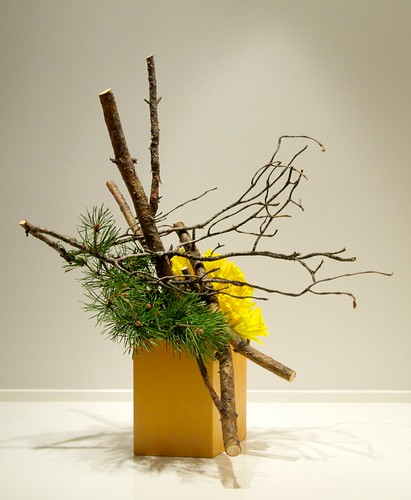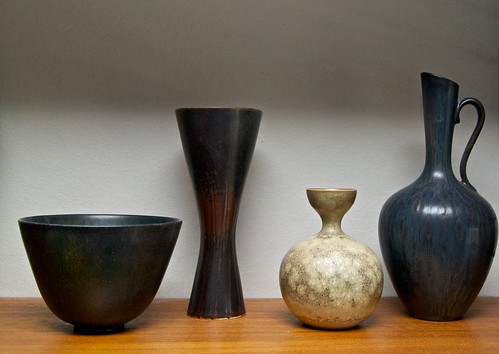Members of the Sogetsu Los Angeles branch celebrates their 25th anniversary this year. Earlier this month I had the pleasure of joining the festivities at their anniversary luncheon at Omni Hotel. It was great to be part of such a large gathering of ikebana enthusiasts. And I was so happy to finally get to see an ikebana live demo with their special guest Tetsunori Kawana. Especially since I have been a few days too early or too late to attend his demonstrations in New York at earlier occasions.

Kawana Sensei made at least ten large arrangements in vases with different kinds of branches and flowers before the finally; a Flo'Work arrangement with Cherry blossoms taking up most of the stage. I'm posting two photos of the Flo'Work arrangement so that you can get an idea of the working process. The first photo is of the structure of branches working as a skeleton for the different kinds of branches and flowers that were added to form the finished arrangement, shown in the second photo. Some of the branches were fixed to the structure with an electric drill, others were just sticked into the arrangement. Pretty impressive. I actually like the look of the bare structure even more than the finished work.



















